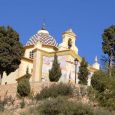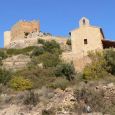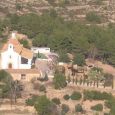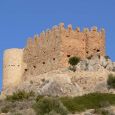Alcora
Advertisement
By air
Nearest airports to Alcora are sorted by the distance to the airport from the city centre.
Valencia Airport (distanced approximately 69 km)
Caude-Teruel Airport (distanced approximately 92 km)
Calamocha-Teruel Airport (distanced approximately 130 km)
Sotos Cuenca Airport (distanced approximately 160 km)
Reus Airport (distanced approximately 170 km)
By road
From Castellon de la Plana will reach this city through the CV-16 and then the CV-190.
By Railway
Castellon station, is located at kilometer 69.5 of the Valencia-Tarragona., part of the route of so-called " Mediterranean Corridor." Castellon is at the present path, is connected with Madrid and Barcelona by long-distance lines (Alaris, Arco, Talgo, Euromed).
Ermita de San Vicente
The hermitage of San Vicente in the municipality of Alcora ( Castellon province, Spain ) was built in 1598.It is a rectangular building of a nave and transept, covered by a barrel vault and dome on pendentives, drum and lantern. It has high choir at his feet. In the chancel tiles are observed Factory Conde Aranda. The decor is based on eighteenth-century plasterwork, graffiti and plaster cherubs, paintings academic type Valencia.
Ermita de San Cristobal
The chapel of San Cristobal in the municipality of Alcora ( Castellon province, Spain ) is situated crowning a hill, overlooking Alcora. It was built in the seventeenth century. This is a church plant of a rectangular nave and divided into five sections, with a choir loft at the foot. It has a facade oculus lighting.It has a square tower at the foot on the side of the epistle. Its façade is topped by a lintel and decorative gable.
Church of Our Lady of the Assumption
The parish church of Alcora ( Castellon province, Spain ) is located on Church Street in the population. Conducted in four stages of construction: Gothic (fifteenth century), Renaissance (XVI), Tabernacle Chapel (XVII century) and s. Nineteenth installment of the feet, has two facades, one at the foot renovated in 1901 and the former Renaissance facade at street Church, now venerable Beltran, along with a cover of the epistle as containing three niches altarpiece shell a virgin owner, S. Peter and S. John (now nonexistent).
Ermita fortified Salvador
The chapel fortified Salvador, also called the hermitage of San Salvador, is a shrine or temple sanctuary recapture fortified located in the municipality of Alcora ( Castellon province, Spain ). It is built in late Romanesque style.This hermitage is built of masonry and cornerstones. Its facade is in the epistle side with Romanesque façade and a portico with arches attached nival. It is covered with vault.
Alcalaten Castle
Alcalaten castle located in Mount San Cristobal, in the municipality of Alcora ( Castellon province, Spain ) is a stronghold of Islamic architecture with reforms of medieval architecture built between the tenth and thirteenth centuries.James I granted the castle and the title of baron d'Urrea Ximen Aragonese gentleman, in 1233, after the conquest of Borriana Square.
Museum of Ceramics
The Museum of Ceramics in Alcora ( Castellon province, Spain) is located in the old town, in a house on the street Weavers, in the neighborhood of the Blood. It was erected in 1907, being its first owner Juan Gil del Castillo. In 1929 the family passes Nomdedeu, in whose hands remain until in 1988 the City Council takes Alcora, with the right intentions with regard to ceramic museum.
Alcalaten Castle
Alcalaten castle located in Mount San Cristobal, in the municipality of Alcora ( Castellon province, Spain ) is a stronghold of Islamic architecture with reforms of medieval architecture built between the tenth and thirteenth centuries.James I granted the castle and the title of baron d'Urrea Ximen Aragonese gentleman, in 1233, after the conquest of Borriana Square
Calvary
Calvary is Situated chronologically in the sixteenth or seventeenth century, before being Hermitage, built in 1698. The chapel was renovated in 1774, expanding and closing the enclosure.
Information not available





